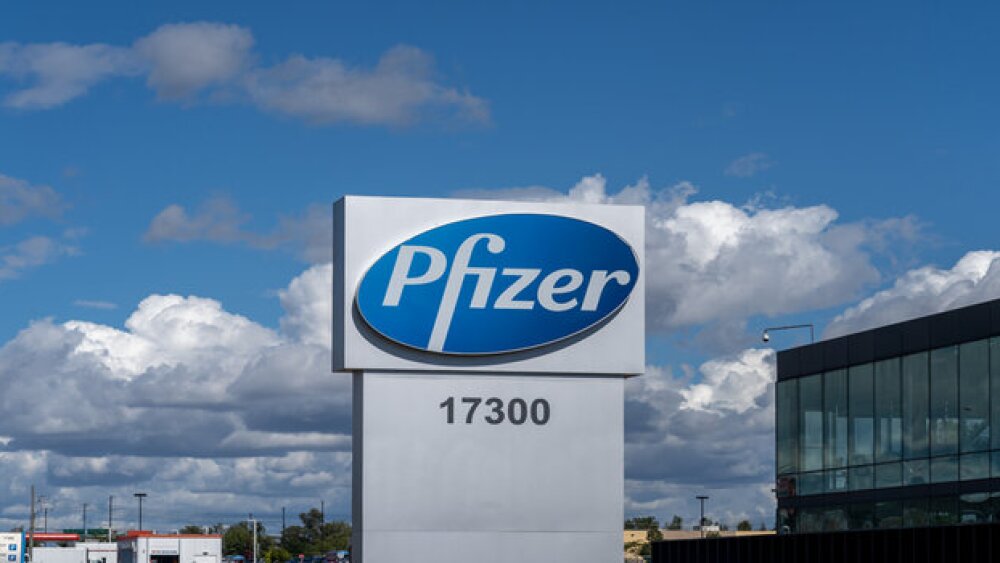Policy uncertainties are impacting biopharma dealmaking from continent to continent, with companies being asked to walk a tightrope on their relations with China.
Pharma companies are facing a political minefield as they go about the business of dealmaking. No matter where they turn, uncertainty and sudden policy shifts are rampant. This comes as China innovation rises and European companies face a dearth of innovation.
President Donald Trump’s tariffs have sent ripples across the world, spurring retaliation and protectionism. This is upsetting the global nature of the pharma industry, which relies on the freedom to chase innovation wherever it may come from. Right now, that’s increasingly China.
“You should go where the best assets are and if equally good assets are available at a lower price, you go where the science is,” Sam Fazeli, director of research for Global Industries and senior pharmaceuticals analyst at Bloomberg Intelligence, told BioSpace.
According to GlobalData, large pharma in-licensed 28% of innovative drugs from Chinese biopharma companies in 2024, hitting a record high. Values for these transactions rose 66% from $16.6 billion in 2023 to $41.5 billion a year later. Looking at just the U.S. licensing deals with Chinese firms, GlobalData found that total deal value rose from $15.7 billion in 2023 to $21.3 billion in 2024.
Summit Therapeutics is one example making waves. The U.S.-headquartered company licensed an oncology asset from China’s Akeso that has been dubbed a potential “Keytruda slayer.” The drug, ivonescimab, was just approved in China for lung cancer, but still needs to be tested in the U.S. before it can achieve regulatory clearance here.
Amid threats of an all-out trade war, companies are being asked to walk a tightrope. Those headquartered in the U.S. may be under pressure not to deal with China or to reduce activities in the region, Fazeli said. Many of these demands have involved manufacturing and pharmaceutical ingredients, but experts are now starting to wonder if intellectual property and innovative drugs might also come under increasing scrutiny.
“While China remains a hub for biopharma innovation, regulatory shifts may disrupt cross-border partnerships and the U.S. access to Chinese drug candidates,” GlobalData senior business fundamentals analyst Ophelia Chan said in a statement.
But pharma executives have so far brushed off concerns that executing deals in China may not be wise at this moment. “Science doesn’t know any boundaries,” Gilead CFO Andrew Dickinson said in January.
Indeed, pharma executives appear to have no intention of slowing down the trips to China for new assets. According to a survey conducted by Fazeli and his Bloomberg Intelligence colleague Pan Liu, the number of deals for drugs sourced from China is expected to pick up by 5% in 2025, while upfront fees could rise 2.5%.
While the survey did pick up on a bit of concern among respondents about the growing geopolitical tensions, the potential treatments coming out of China are just too good to pass up. Companies like Summit are living proof.
A Symbiotic Relationship
The uptick in biopharma deals involving China came amid a downturn in pharma M&A; companies were instead turning to China’s innovative biotechs to stock up their pipelines, GlobalData’s Chan said. That was despite congressional moves like the BIOSECURE Act, which was never passed but still spurred companies to reduce manufacturing and contracting exposure to China. Dealmaking continued apace, with company after company loading up on exciting Chinese assets. “Up until the end of last year, there was no pressure on them doing anything to do with China,” Fazeli said.
The truth is, China needs the deals as much as the pharmas who are snapping up the assets, according to experts who spoke with BioSpace. Indeed, China is doing what it can to encourage companies to keep dipping into its well of innovation. “China has now said that it advises countries not to succumb to U.S. pressure in reducing their interactions with China,” Fazeli said.
The Chinese government is content with the uptick in cross-border dealmaking because the country can’t spend more on healthcare amid broader cuts that are underway, according to Jeroen Groenewegen-Lau, head of the science, technology and innovation program at the Mercator Institute for China Studies (Merics) in Berlin. These include volume-based procurement, the national reimbursable drugs list and other initiatives intended to stem rising costs. So the government has been fine with U.S. companies nabbing rights to a promising drug—as in the case of Summit—to develop outside of China.
“Sure there are worries over foreign co-ownership of key innovative drugs, but Beijing is not willing to significantly increase healthcare expenditure and its pharma firms need investments so it is encouraging foreign investment to come in so its innovative drugs sector can continue to grow,” Groenewegen-Lau told BioSpace in an email.
Moreover, while R&D and clinical trials are cheaper to conduct in China, the country does not have a domestic market that can really embrace new therapies, pushing Chinese firms to seek out-licensing or new company formations to push promising treatments to the later trial stages, Groenewegen-Lau said. “This arrangement works well financially for firms in China, the U.S. and the EU, at least well enough for pharma [multi-national corporations] to be keen for this to continue.”
But these deals are facing increasing political pressure. This can be particularly difficult for European firms to navigate, as they may wonder how U.S. regulators will respond to their work in China, Groenewegen-Lau noted. “Vice versa, prospects of poor market access in the U.S. for Chinese-owned treatments further drives Chinese firms into the arms of U.S. and European firms,” he said.
Fazeli said the escalating China-U.S. trade war could put the symbiotic China-pharma relationship in jeopardy.
“China might turn around and say, ‘Look, stop selling your assets to the West,’” Fazeli said. “Nobody seems to talk about that. We all seem to think about will Western governments say, ‘Okay, you can’t do more deals with China’? China might tell us, actually, ‘Stop giving your assets away. Let them go and figure it out themselves.’”
A Multipolar World
AstraZeneca, for one, has not been deterred. As peer pharmas have dropped billions in manufacturing investments in the U.S. over the past few months, AstraZeneca did the same in China with a $10 billion investment.
European pharmas are under intense pressure to boost innovation. Last year, a European Commission report nicknamed the Draghi report after its author, former European Central Bank President Mario Draghi, found that the bloc’s pharma sector is fading due to low investment in R&D and regulatory fragmentation.
“Europe spends a substantially lower share of GDP on innovative medicines than the U.S. and, as a result, is falling behind in attracting R&D and manufacturing investments, putting its ability to protect the health of its own people at risk,” AstraZeneca CEO Pascal Soriot said in a statement that was provided to Reuters. He likened the importance of boosting medical innovation in the region to that of defense spending.
Last year, European companies outspent U.S.-based ones on China-originated assets, according to a recent report in Nature Reviews Drug Discovery. European companies closed 23 licensing deals valued at $4.6 billion in upfront payments in 2024, compared to 22 deals with U.S. companies totaling $3.5 billion upfront.
“Europe would like to improve its competitiveness in pharma but banning or even discouraging partnerships with Chinese firms does not seem to be on the agenda,” Groenewegen-Lau said. “There is less concern over China being a global leader in drug innovation, partly because Europe is more comfortable with the idea of a multipolar world.”
Europe’s pharma innovation problems are complex, as is the global political situation. But it’s hard not to attribute some of Europe’s dealmaking in China to what’s happening across the pond in the U.S., said Asmita Sharma, founder of healthcare and IP analysis research firm Intelligience.
“There is a shift happening but no one is specifically tying this shift to ‘geopolitical’ reasons yet,” Sharma told BioSpace. “At the same time, the only thing that has changed in the recent months is the geopolitical climate—so, I believe it’s just a matter of time that folks will anchor this shift down to the political climate.”
America First
In the U.S., it’s still unclear which side of the coin Trump’s tariffs will hit: generic drugs or innovative therapies—or both. To address the manufacturing concerns, Big Pharmas are announcing massive investments in U.S. facilities in an attempt to appease Trump.
“It would seem to me that U.S. firms would also be happy to onshore some of the production to the U.S. if the incentives were right, especially if that would enable them to still cherry-pick the best new drugs that Chinese firms develop at a fraction of the cost,” Groenewegen-Lau said.
But alarm bells are ringing for the U.S. biotech sector. A congressional commission warned earlier in April that China’s industry is poised to eclipse American innovation as U.S. federal policy has taken the foot off the gas. The commission’s report recommended a national biotechnology strategy and a $15 billion infusion into the industry over the next five years. Senators Todd Young (R-IN) and Alex Padilla (D-CA) followed up days later with a bill to establish the National Biotechnology Coordination Office that would work to boost biotech innovation and ease regulatory burdens.
Pfizer CEO Albert Bourla marveled at how Chinese biotechs are “progressing with the speed of light” during his company’s first quarter earnings call on Tuesday. He said the nation has managed to accerate its science immensely in the past four years, catching up to the sizable lead long held by the U.S. He said little money is flowing to U.S.-based companies, while “China is doing the opposite.”
Bourla tied the issue back to national security, which is how Trump has framed his exploration of tariffs against the pharmaceutical industry.
“Imagine if in the next pandemic, the medicines that will help will not be invented in this country, but in another country. That will be a problem,” Bourla said.
Fazeli said some of his colleagues think the Trump administration could come for China licensing deals in an effort to encourage U.S. biotech investment. Trump issued an executive order in February called the America First Investment Policy that lays out the administration’s position on inbound and outbound investments with China and other nations deemed adversaries. The order specifically mentions biotech, but it’s still unclear how the industry will be affected.
“I think the effort might be to try and redirect the dollars to U.S. biotechs,” Fazeli said. “But if they don’t have the assets, they don’t have the assets.”
H.C. Wainwright analysts suggested in an April 22 note that all the regulatory and political uncertainty could actually drive investors into the hands of U.S. biotechs. “We expect U.S.-anchored companies to benefit from heightened visibility with both regulators and investors,” the firm wrote. PitchBook similarly thinks the next era of biotech will be “America-first,” in lock step with Trump’s policies.
One strategy that venture capital firms have been using to bring a bit more U.S. ownership to a Chinese asset has been to form a new U.S.-based company around the therapy. The original Chinese innovator will typically hang on to an equity stake but the parties aren’t exactly exchanging cash like they would in a buyout or licensing deal, Fazeli said.
This was the strategy behind weight loss biotech Kailera Therapeutics, which launched in October 2024 with a massive $400 million series A, a handful of high-profile U.S.-based backers and several assets from China’s Jiangsu Hengrui Pharmaceuticals. Its lead drug HRS9531 has already posted weight loss results in line with Eli Lilly’s Zepbound.
These deals could still face regulatory scrutiny, say through a ban on publicly listing companies with a certain percentage of Chinese ownership, Fazeli said.
The bottom line for pharmas, regardless of where they are headquartered, is that they face a world of uncertainty right now.






